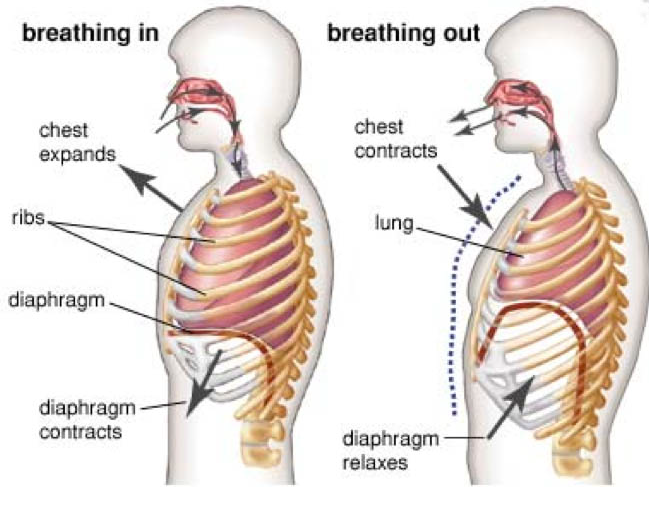There is perhaps no more significant step a person could take towards better health than improving breathing.
Chronically contracted muscles of the abdomen, chest, back, and waist can easily restrict the inhalation and exhalation of breath. There is a complicated and beautifully orchestrated pattern of muscular coordination between the diaphragm, the abdominal muscles, the chest, neck, and shoulder muscles, the muscles between the ribs, as well as the back and waist muscles that must occur in order to enable deep and easy breathing. Any misfunction of this coordination will lead to shallow breath, thoracic breathing (breathing into the chest only), reverse breathing, lifting of the shoulders or a number of other possible scenarios.
Clinical Somatic education can help a client restore the natural rhythms and coordinations of breathing and allow the musculature of the torso to soften, yield to and coordinate with the movement of the diaphragm and lungs. All of the work done in private sessions and the self care exercises of Clinical Somatics involve the direct improvement of coordination of the breathing functions.

There is perhaps no more significant step a person could take towards better health than to improve their breathing. How well (or poorly) we breathe affects almost every aspect of our health, wellbeing, emotional states and mental capacities, aging process, and overall ability to function. Yet, so many people — from the chronically ill or stressed to those who appear to be in excellent shape — suffer from either diagnosable breathing conditions or simple run-of-the-mill shallow or otherwise poor breathing.
Research has shown that shallow breathing is directly related to heart disease and will generally decrease energy levels. Proper breathing rhythm (sinus arythmia) leads to enhanced flexibilty of the walls of the blood vessels, improving cardiovascular health. The relaxed state of musculature throughout the whole body brought about by Clinical Somatics, as well as the more efficient use of energy in movement, will allow for greater blood flow and oxygenation, and the work of the heart and lungs becomes easier as overly-contracted musculature no longer provides resistance to the flow of blood or consumes energy needlessly.

